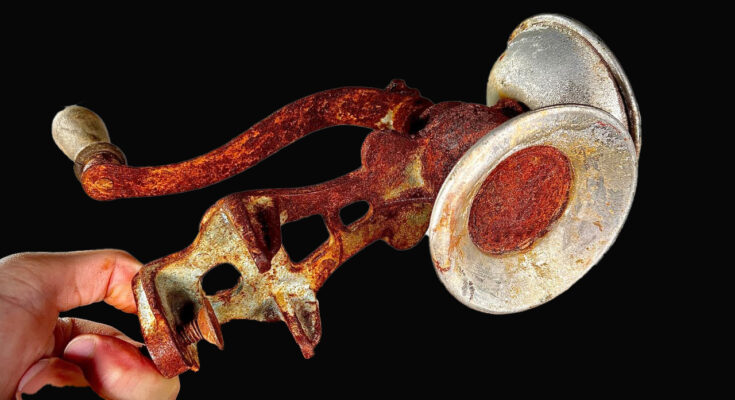estoring a 1922 Alexanderwerk bean slicer involves careful cleaning, rust removal, and preservation of its historical features. Here’s a step-by-step guide to help you restore it:
Materials Needed:
- White vinegar or lemon juice
- Baking soda
- Phosphoric acid (for severe rust)
- Steel wool or wire brush
- Sandpaper (medium and fine grit)
- Metal polish
- Protective gloves and goggles
- Cloth or rag
- Rust-inhibiting primer (optional)
- Clear lacquer or protective coating (optional)
Step-by-Step Instructions:
1. Disassemble the Bean Slicer
- Carefully take apart the bean slicer, noting how each part fits together. Keep track of screws, bolts, and any small components. If needed, take photos for reference.
2. Clean the Parts
- Wipe down all parts with a damp cloth to remove any loose dirt or debris.
3. Soak Rusted Parts
- For rusted components, soak them in white vinegar or apply lemon juice directly to the rust. These acidic solutions help loosen rust. Let the parts soak for several hours or overnight.
4. Scrub Off the Rust
- After soaking, use steel wool or a wire brush to scrub away the rust. Apply pressure to the rusted areas and work in circular motions. For stubborn rust, use a phosphoric acid rust remover according to the manufacturer’s instructions.
5. Apply Baking Soda Paste
- For any remaining light rust or residue, apply a paste made from baking soda and water. Scrub the area with a brush or steel wool.
6. Sand the Surface
- Use medium-grit sandpaper (around 120 grit) to sand off any remaining rust or rough patches. Follow with fine-grit sandpaper (around 220 grit) to smooth the surface.
7. Clean and Dry the Parts
- Wipe down all components with a damp cloth to remove any dust from sanding. Thoroughly dry each part to prevent new rust from forming.
8. Polish the Metal
- Use metal polish to restore the shine and protect the metal. Apply polish with a soft cloth and buff the surface to a shine.
9. Reassemble the Bean Slicer
- Once all parts are clean and dry, carefully reassemble the bean slicer. Ensure all components fit properly and function smoothly.
10. Optional: Apply Rust Inhibitor or Protective Coating
- To prevent future rust, consider applying a rust-inhibiting primer or a clear lacquer to the metal surfaces. This will protect the metal while preserving its appearance.
11. Regular Maintenance
- Regularly clean and dry the bean slicer after use to maintain its condition and prevent rust.
Additional Tips:
- Documentation: If the bean slicer has any manufacturer’s marks or unique features, document them before beginning restoration to preserve its historical value.
- Consult Experts: For valuable or rare antiques, consulting with a restoration expert can ensure that the process is done correctly and without diminishing the item’s value.
Restoring a vintage item like the Alexanderwerk bean slicer can be a rewarding project, preserving its history while bringing it back to life.



